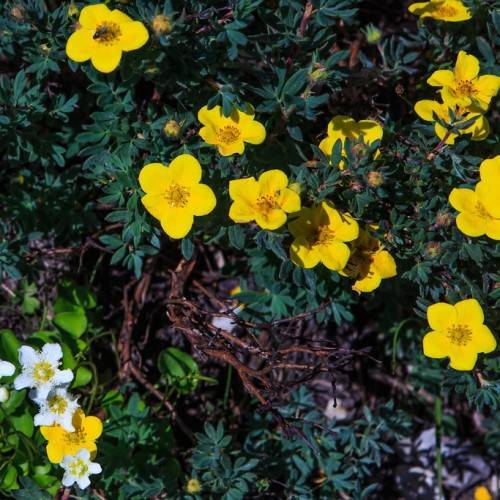
shrubby cinquefoil
Potentilla fruticosa 'SMPFMY' CHEESEHEAD
Cycle:
Perennial
Watering:
Average
Hardiness Zone:
3 - 8
Flowers:
Flowers
Sun:
Full sun,part shade
Leaf:
Yes
Growth Rate:
Low
Maintenance:
Low
watering
Shrubby Cinquefoil (Potentilla fruticosa 'SMPFMY' CHEESEHEAD) should be watered deeply once or twice a week during the summer. This can be done by running a trickle of water directly onto the soil at the base of the shrub for a few minutes, or until the soil is saturated. During the winter, reduce watering frequency to once every 2 weeks. Stop watering completely when the temperature drops to around 40 degrees Fahrenheit (4.5 degrees Celsius). If possible, provide an inch of water during each watering session. If the soil is prone to drying out quickly, mulch around the base of the shrub and check soil moisture often.
sunlight
Shrubby cinquefoil (Potentilla fruticosa 'SMPFMY' CHEESEHEAD) requires full sun for at least 6-8 hours of direct sunlight each day. If it does not get enough direct sunlight, the shrub may grow leggy and not flower. Morning sun is ideal as it is less harsh and will not dry out the leaves too much. Additionally, afternoon shade during the hottest, sunniest hours of the day is recommended to reduce the incidence of leaf burn and other sun damage.
pruning
Shrubby cinquefoil (Potentilla fruticosa 'SMPFMY' CHEESEHEAD) should be pruned in late winter or early spring each year, before new growth appears. Pruning time may vary slightly depending on the climate you live in. Pruning should involve removing up to 1-third of the older growth, while leaving newer growth and flower buds alone. This will promote new, denser, healthier growth and more prolific and abundant flowering. Its important to note that pruning too severely or at the wrong times of the year can negatively affect the plant's growth and flowering, so it's best to err on the side of caution.
